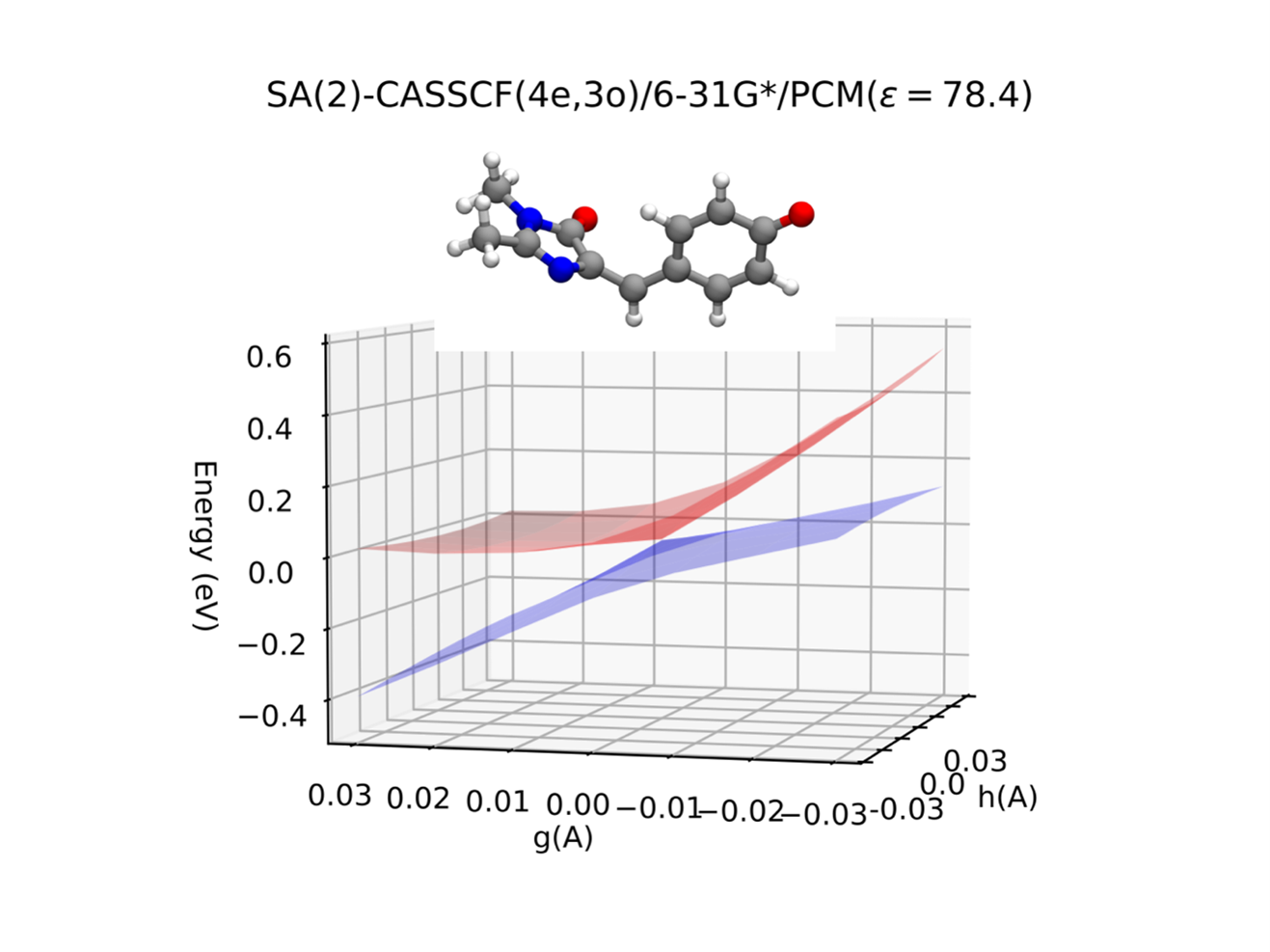New Theoretical Method Reveals Polarization Effects of Solvents Over Photoreactions
In a recent publication (Song, Journal of Chemical Physics, 2022) the Song Lab introduced state-averaged complete active space self consistent field (SA-CASSCF) coupled with polarizable continuum models (PCM), a new theoretical method that enables simulating polarization effects of solvents in non-adiabatic excited state dynamics for the first time. When applying the new method to dipolar merocyanine dye, the theoretical simulations revealed how the barrier heights of photoreaction pathways can be tuned with polarity of solvents, leading to systematic control of excited state lifetimes. In another application to green fluorescent protein chromophore, the theoretical simulations show that the geometry and the shape of the conical intersection in solvents are qualitatively changed compared to in the gas phase, suggesting non-trivial solvation effects over excited state dynamics in photoreactions. This new method promises to yield insights into mechanisms of photochemical reactions in solvents at ultrafast timescales.
More information at https://doi.org/10.1063/5.0085855

